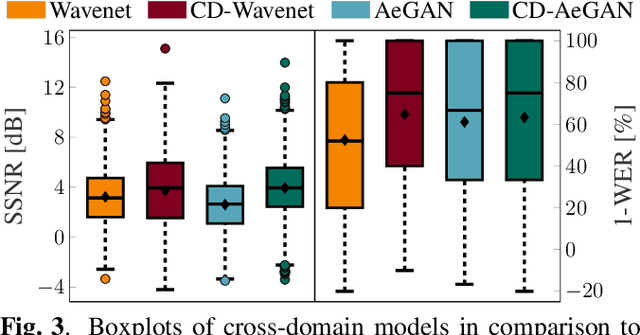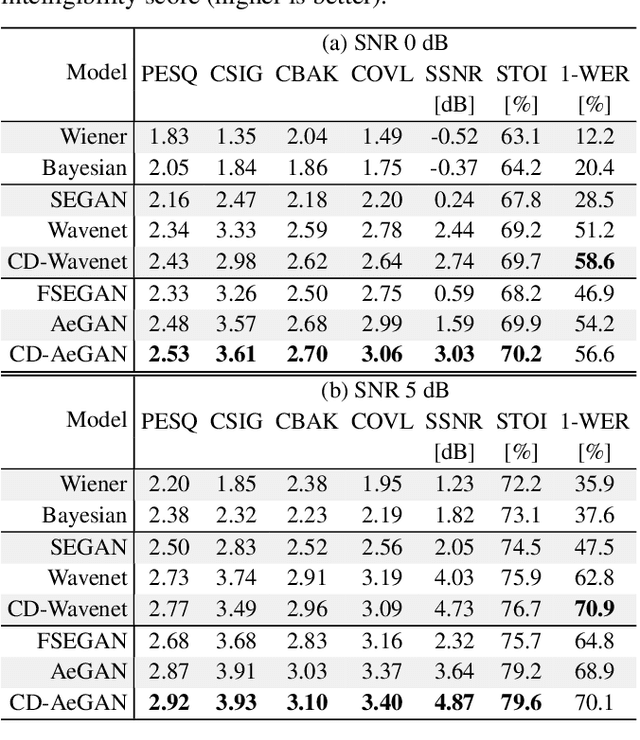Investigating Cross-Domain Losses for Speech Enhancement
Paper and Code
Oct 20, 2020



Recent years have seen a surge in the number of available frameworks for speech enhancement (SE) and recognition. Whether model-based or constructed via deep learning, these frameworks often rely in isolation on either time-domain signals or time-frequency (TF) representations of speech data. In this study, we investigate the advantages of each set of approaches by separately examining their impact on speech intelligibility and quality. Furthermore, we combine the fragmented benefits of time-domain and TF speech representations by introducing two new cross-domain SE frameworks. A quantitative comparative analysis against recent model-based and deep learning SE approaches is performed to illustrate the merit of the proposed frameworks.
* 5 pages, 3 figures and 2 tables. Submitted to ICASSP 2021
 Add to Chrome
Add to Chrome Add to Firefox
Add to Firefox Add to Edge
Add to Edge